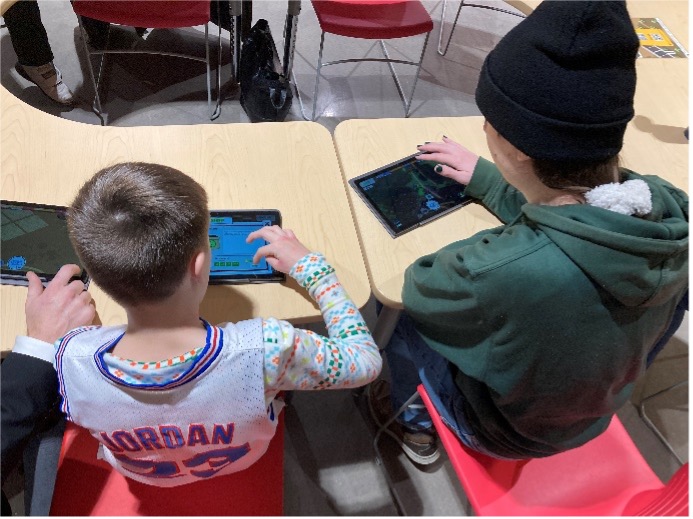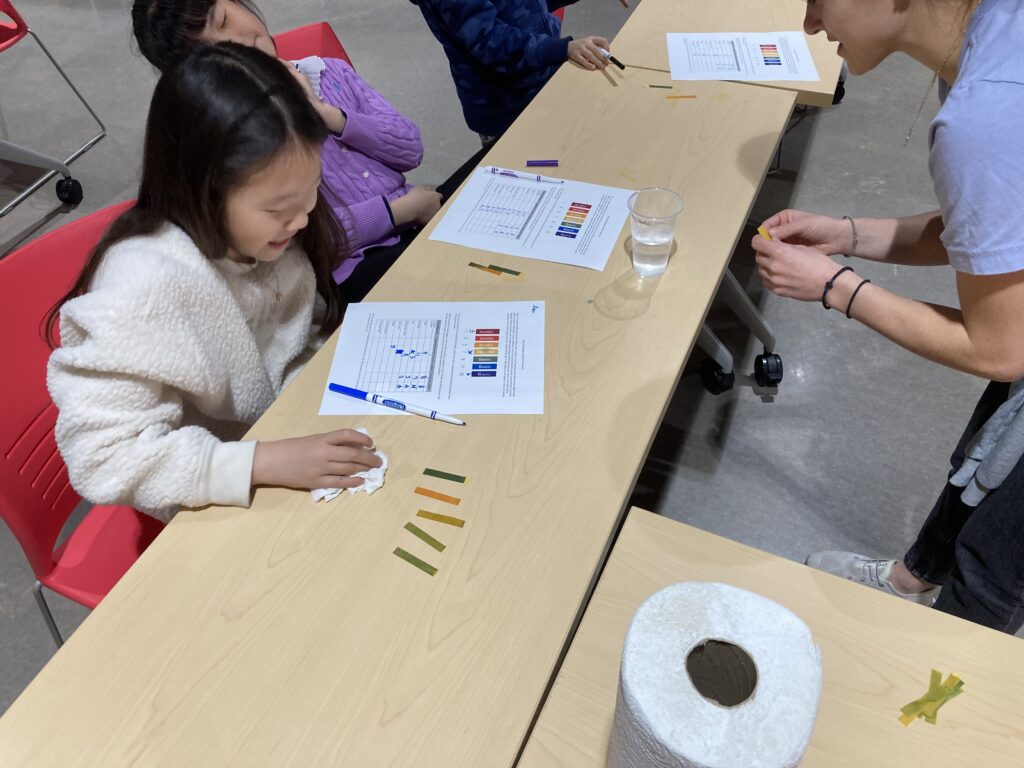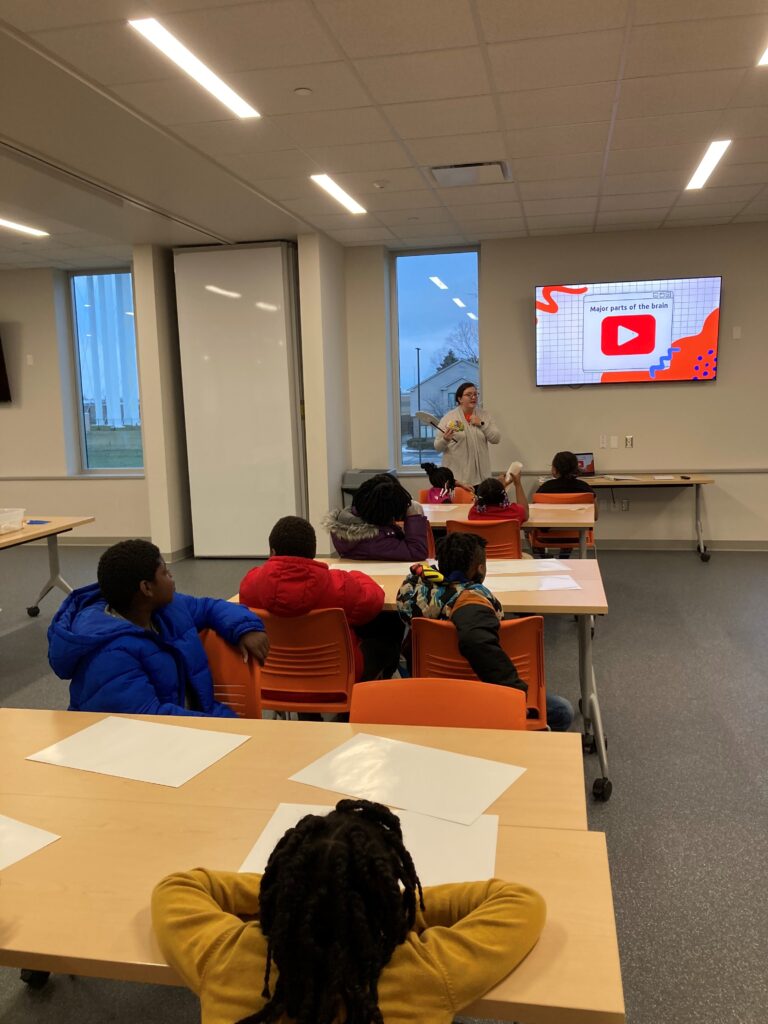
Welcome to our programming! These modules are the result of collaborations with our partners: the Center for Social & Behavioral Science (CSBS), the Beckman Institute, the Cancer Center at Illinois (CCIL), the Institute for Sustainability, Energy, and Environment (iSEE), and the National Center for Supercomputing Applications (NCSA). Most are developed by partnering with real scientists and labs here on campus, ensuring that they are carefully crafted to suit the unique capabilities and skills of specific age groups, providing engaging and impactful experiences for all participants.
If you’re a researcher interested in sharing your findings with us or develop a module, please reach out to Paige Duncan, our Community Engagement Specialist. We’re excited to embark on this learning journey with you!
What is science? (CSBS)

When introducing children to the concept of science, we often rely on images depicting test tubes, lab coats, and microscopes. However, the world of science is far more diverse and fascinating than these symbols suggest! The objective of the “What is Science” module is to educate children about the various branches of science and the types of questions scientists in each field might explore. After exploring these disciplines, we encourage children to draw themselves as scientists and consider what they would investigate. This module was developed in partnership with the Center for Social & Behavioral Science.
Creating Surveys (CSBS)

The “Creating Surveys” module was created to introduce children to the significance and application of surveys in social and behavioral science. Children enjoy completing various types of surveys, reviewing each other’s responses, and even organizing the data they collect. This activity is an excellent way to encourage children to think about social and behavioral science and the research topics scientists in this field might explore. This module was developed in partnership with the Center for Social & Behavioral Science.
Advanced Visualization Laboratory (NCSA)

In collaboration with Kalina Borkiewicz at the Advanced Visualization Laboratory (AVL) within the National Center for Supercomputing Applications (NCSA), we created a module to educate children on how scientists use real-life data to produce visualizations for documentaries using supercomputers. Children enjoy drawing pictures using numbers, similar to how computers use data to create images, and testing their knowledge with coordinate planes. This outreach effort marks AVL’s first engagement with junior high and elementary-aged children.
High Performance Computing (NCSA)

This engaging and dynamic module helps children conceptualize the inner workings of a supercomputer as it processes data and tackles challenging math equations. Children begin by crafting their own computers from cardboard boxes. Through a series of games, they discover the usefulness of computers in performing mathematical calculations. They also learn that certain math problems can be too complex for a regular computer, highlighting the necessity of specialized computing facilities like NCSA. This module was developed in collaboration with Timothy Andrew Manning at NCSA.
SCAPES Interactive and Educational App (iSEE)

What’s in that pond? (iSEE)

“What’s in that pond?” engages children by examining water samples from local ponds to discover the small organisms living there! Developed by Carla Caceres, an iSEE professor who studies plankton, this module educates the community about aquatic food webs. Children not only observe how plankton are collected but also enjoy locating these tiny organisms, placing them on a petri dish, and examining them under a microscope!
Strawberry DNA Extraction (CCIL)
You can place any type of WordPress Block or blocks into this Accordion Section

Understanding DNA can be tough for kids since it’s tiny and hard to conceptualize. But this fun experiment lets them see and touch it! In this module, kids discover how DNA works and learn how mutations can lead to issues like cancer. Then, using simple household items, they extract DNA from a strawberry! It’s incredible to watch their faces light up when they realize the goop they’ve extracted is all of the strawberry’s DNA. This module is a fantastic way for kids to start understanding cells and DNA, the basic units of life.
Detecting Cancer Cells with Chromatography (CCIL)
This engaging activity created by Craig Richard, a postdoc at the Cancer Center, introduces kids to chromatography, or the process of separating different components in a mixture. This technique is used to identify cancer biomarkers and is crucial in early cancer detection. Despite being a complex topic, kids can explore it themselves using everyday objects to learn about the real-life processes that scientists use to combat a serious disease.
Why are lemons sour? (Beckman)

The year is 1934. A former classmate comes to you needing an easy, reliable tool to measure the acidity in lemon juice for Sunkist. How will he know they are ripe without biting into them?
Enter the pH meter, developed by Arnold O. Beckman, a tool still in use.
Young scientists will learn about the pH scale and meter. They will then use the scientific method to test how acidic or basic different household solutions are.
Brain Power! (Beckman)
You can place any type of WordPress Block or blocks into this Accordion Section

From helping us to solve a conflict with our friend, to coordinating our muscles so we can ride a bike; our brain is incredibly involved in our everyday lives. It even keeps us breathing when we’re asleep.
Students will use their temporal lobe to create fun memory devices to help them understand the various parts of the brain. They’ll experience some of the research that’s been done to explore how the brain works and create a model of the human brain.